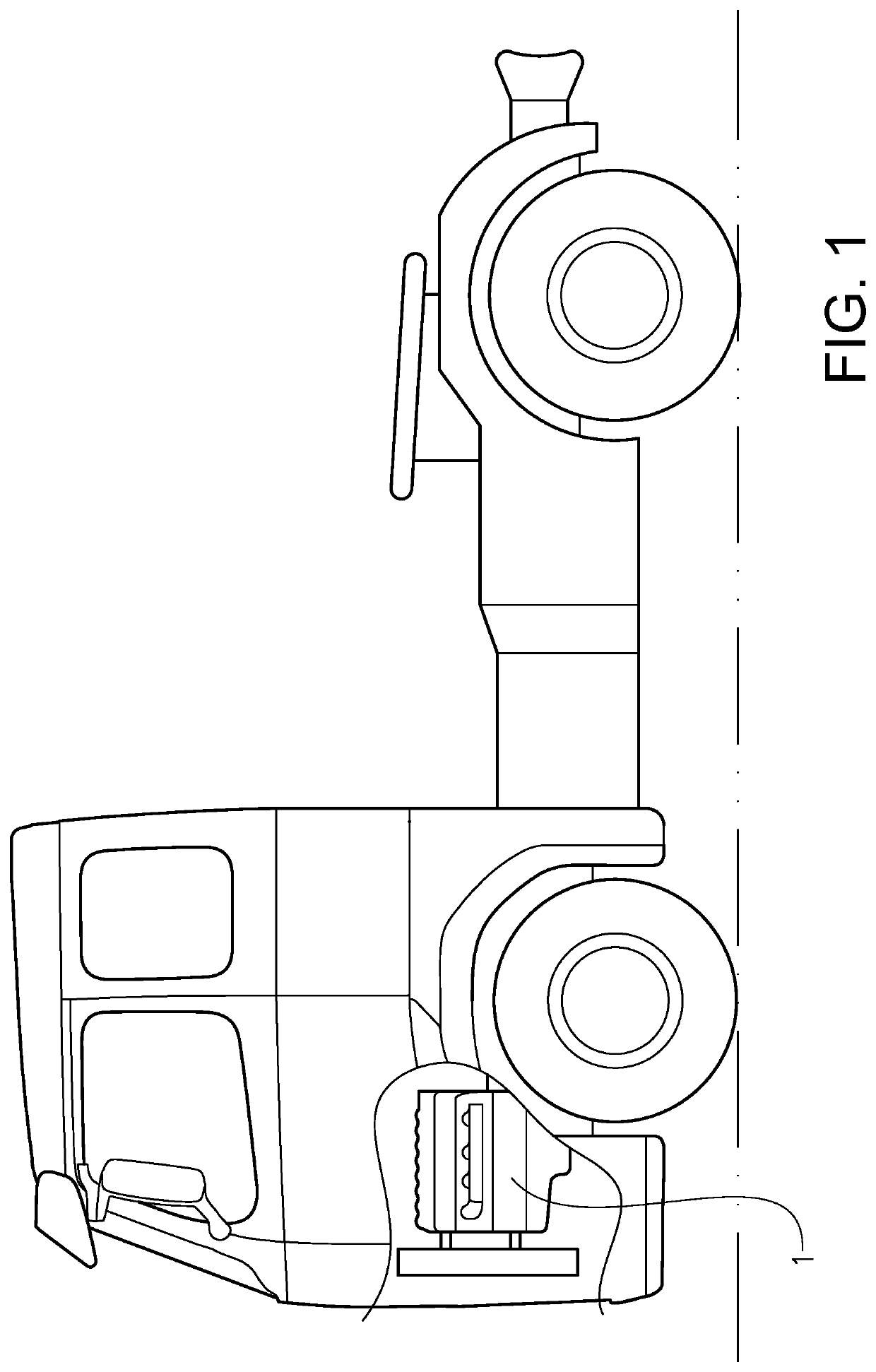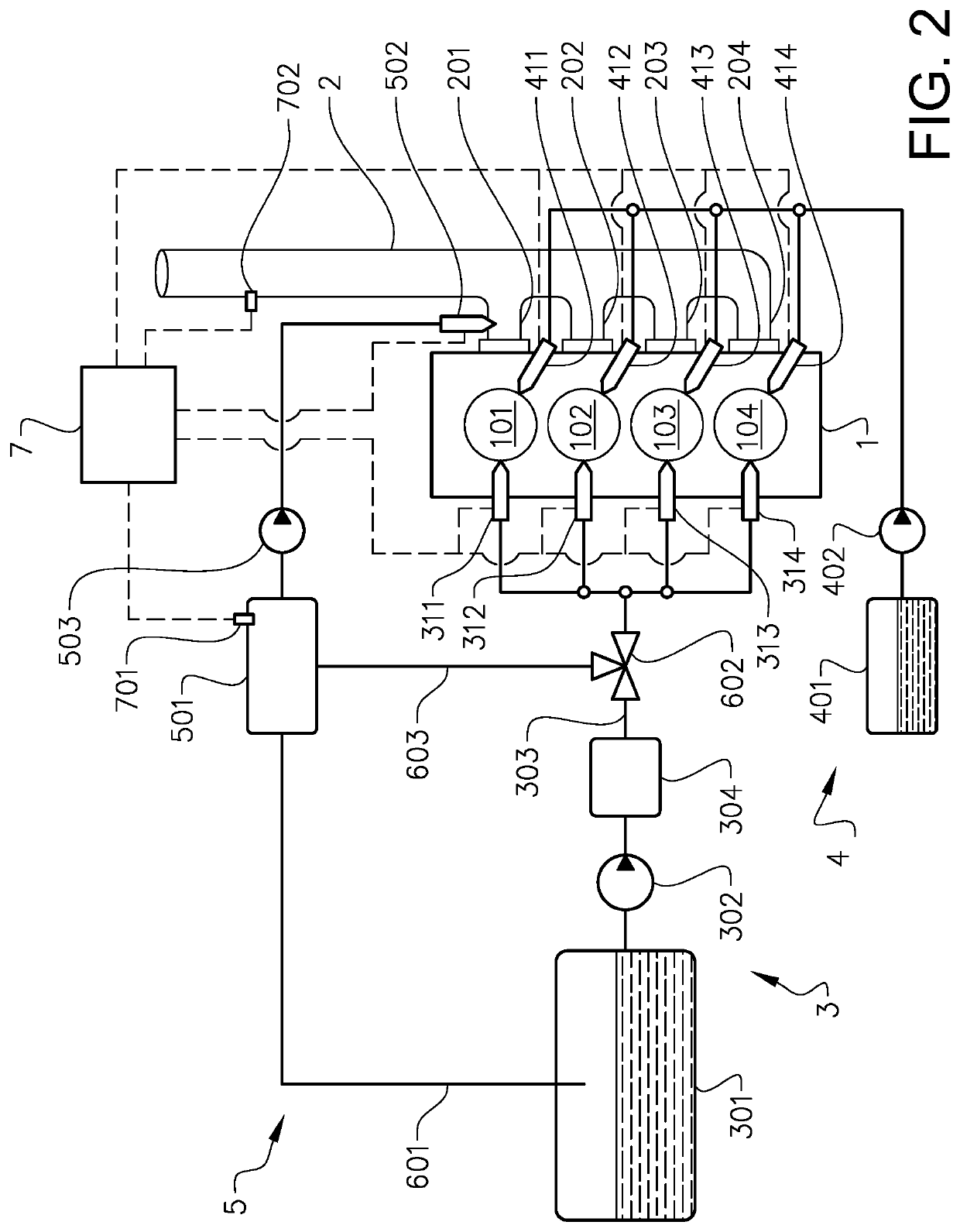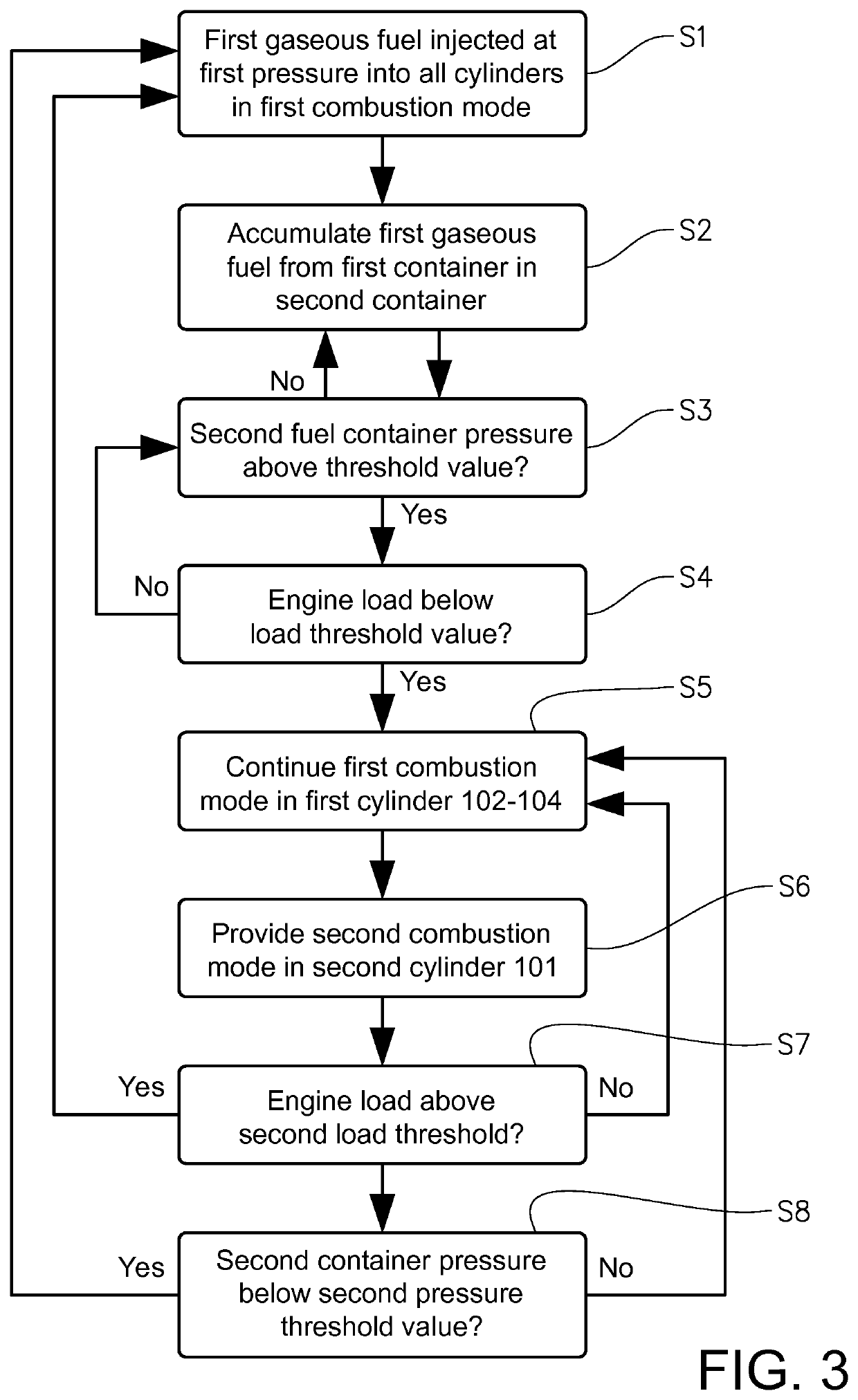Method for controlling an internal combustion engine
a technology of internal combustion engine and control method, which is applied in the direction of electric control, machines/engines, mechanical apparatus, etc., can solve the problems of creating environmental disturbances, and reducing so as to reduce the environmental impact of vehicles, and reduce the operation capacity of the first gas injection system.
- Summary
- Abstract
- Description
- Claims
- Application Information
AI Technical Summary
Benefits of technology
Problems solved by technology
Method used
Image
Examples
Embodiment Construction
[0053]FIG. 1 shows a vehicle in the form of a truck, or a tractor for a semitrailer. It should be noted that the vehicle can be of a variety of alternative types, e.g. it may be a car, a bus, or a working machine such as a wheel loader. The vehicle comprises an engine system with a high pressure gas injection (HPG) internal combustion engine 1.
[0054]FIG. 2 depicts components of the engine system including the engine 1 which has four cylinders 101-104. The engine system comprises an air intake system 2 for the engine 1. The air intake system 2 presents for each cylinder 101-104 an air conduit 201-204 dedicated for a respective of the cylinders 101-104.
[0055]The engine system also comprises a first gas injection system 3 for injecting a first gaseous fuel into the cylinders 101-104 at a first pressure. Any suitable type of gaseous fuel may be used; in this example the first gaseous fuel is natural gas comprising methane. Other possible gases include propane and butane. The first gas i...
PUM
 Login to View More
Login to View More Abstract
Description
Claims
Application Information
 Login to View More
Login to View More - R&D
- Intellectual Property
- Life Sciences
- Materials
- Tech Scout
- Unparalleled Data Quality
- Higher Quality Content
- 60% Fewer Hallucinations
Browse by: Latest US Patents, China's latest patents, Technical Efficacy Thesaurus, Application Domain, Technology Topic, Popular Technical Reports.
© 2025 PatSnap. All rights reserved.Legal|Privacy policy|Modern Slavery Act Transparency Statement|Sitemap|About US| Contact US: help@patsnap.com



